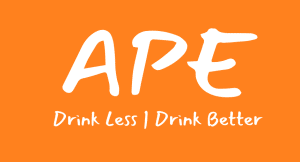The best wine glasses, each to his own
Are you ready to find out which is the best wine glass for every occasion?

The first wine glass to know is the one that is used for bubbles. The Flute. The shape is flute-shaped to enhance the hidden structure and not to disperse the perlage. Suitable for all Champagne and the Classical Method, as well as for Cava, Pet Nat and Prosecco.. Never, and I mean never, shake the goblet vigorously, we would risk 'degassing the product', it must be done in a barely noticeable manner.

The second wine goblet to consider is the one for the white wine, absolutely the standard for any tasting, as it can also be used for rosé wines and for very light red wines. Its bowl shape accentuates the hints of freshness and minerality, it must be shaken without exaggerating.

With the third wine goblet you also go up in organoleptic structure of the suitable product and obviously change in pigmentation. Let's talk about the Bordeaux Glass, suitable for structured red wines and also to orange wines, white wines that think they are red. Its domed shape allows the aromas to open up and give the wine complexity on the nose. It can be shaken vigorously

The fourth wine glass we are reviewing is the Burgundy Glassdesigned for important purposes, to let them rest calmly in their large cup, to increase their surface area and to let them breathe in order to release and accentuate all the wine's scents, especially the fruity notes and sweet tips. Suitable for the great Pinots, Barolo and Barbaresco, Taurasi and the thick Tempranillo. To the Bordeaux blend, also Italian style. But also to the great Chardonnays, from Burgundy or California. In short, a glass to show off on important occasions. You can shake as much as you want, but be careful not to traumatize your super wine with excessive changes.

Full, we finally get to the end of the mealwhere we can enjoy a well-deserved sweet or fortified wine to end on a high note. Be it a PassitoWhether it is a Sfursat rather than a Madeira, a Sherry or a Port, the glasses to be favoured should have a medium tapered shape to accentuate the subtle balance of these products between acidity, power and sweetness.

This time it's for real, we get to the end of our dinner and we definitely deserve a good digestive degreaser. The shape of the bowl is tapered, to make the sip more tasty, fruity and harmonious. For bitters but also distillates and grappas.
Tasting techniques
The glass, except in the case of bubbles, which must be preserved, should always be shaken with care and vigor, never with excessive force, this is to prevent the wine overflowing but also not to traumatize it too much, especially in wines that have rested in the bottle for at least 10. For this reason we recommend the use of the decanter or carafe for wines not more than ten/twelve years old.
Visual Examination
Olfactory Examination
Gustatory Examination
I always remind you that the more genuine and well-made the wine, the better your tasting experience will be. You can't pay 5 euros for the wine you drink (it costs a little more than one euro to those who sell it to you, what are you drinking?)., it will not be good for you in the long run. Choose artisan wines that come from producers who respect not only themselves and the environment, but also you, the final consumer. Wines without chemicals in the vineyard as well as in the cellar, better if unfiltered and without stabilizers.
Well, now you're ready to enter the magical world of Apewineboxes.com



